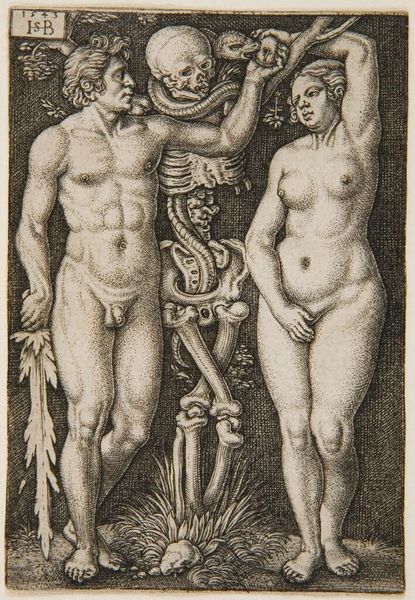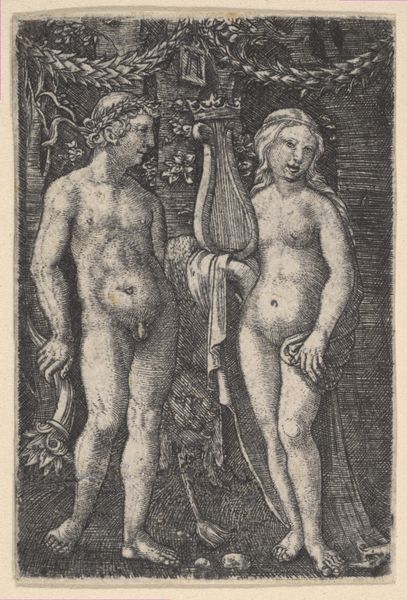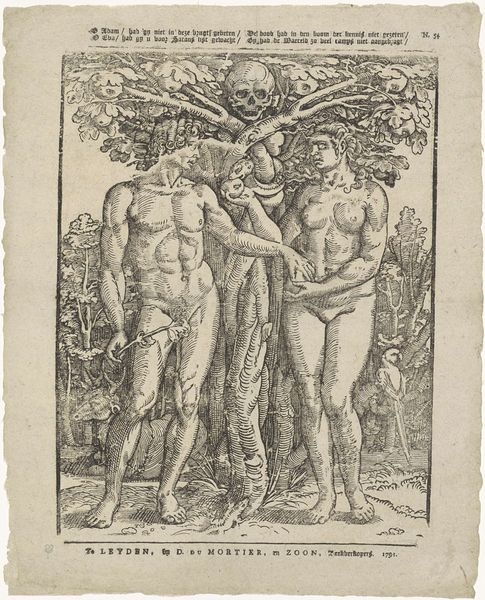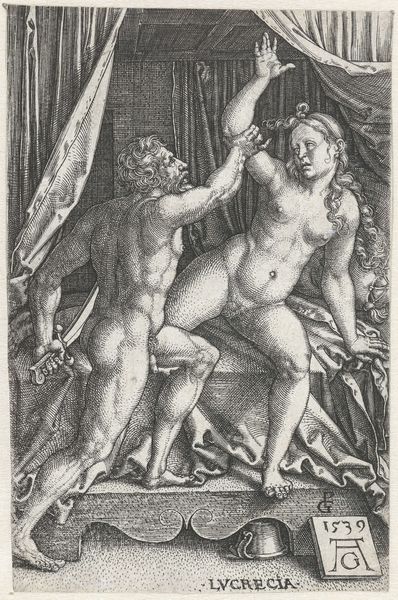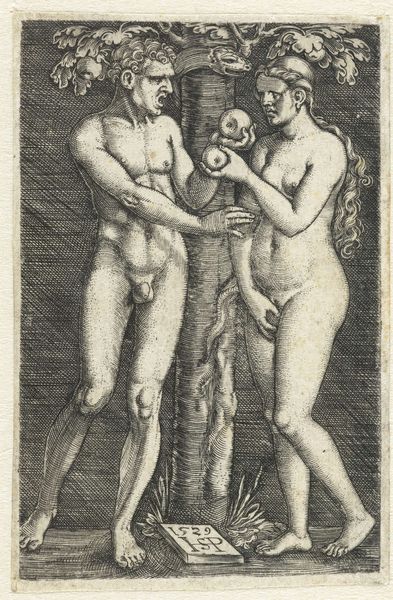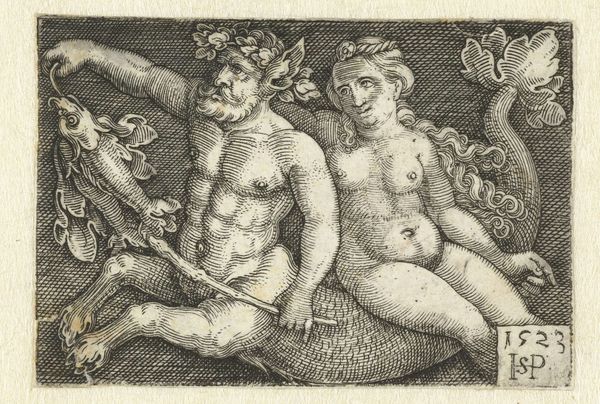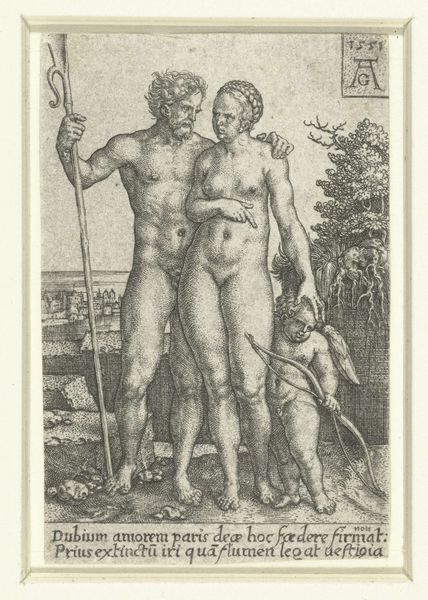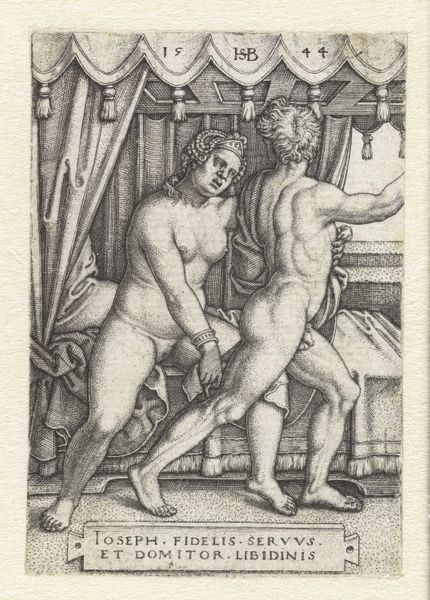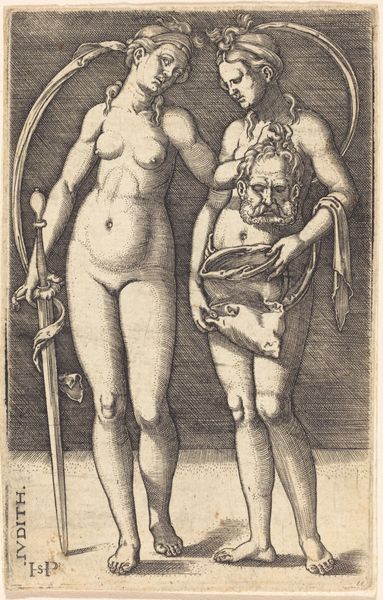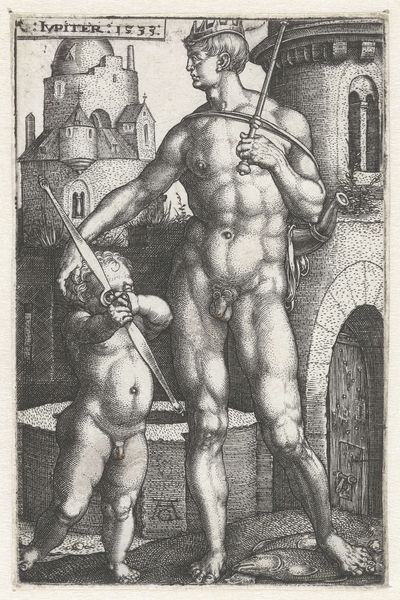
print, engraving
#
portrait
#
allegory
# print
#
old engraving style
#
figuration
#
form
#
vanitas
#
line
#
portrait drawing
#
history-painting
#
northern-renaissance
#
nude
#
engraving
Dimensions: height 82 mm, width 57 mm
Copyright: Rijks Museum: Open Domain
Curator: This engraving, crafted by Sebald Beham in 1543, is titled "Adam and Eve and Death," currently residing here at the Rijksmuseum. Editor: Immediately, the confrontation strikes me. The gaunt figure of Death wedged so aggressively between the youthful, idealized forms of Adam and Eve feels both shocking and instructive. Curator: Yes, Beham's piece emerges from a Northern Renaissance tradition grappling with mortality. It reflects not only the biblical narrative of the Fall, but also wider societal anxieties related to sin, punishment, and the inescapable presence of death, particularly potent given the plague epidemics ravaging Europe. The very medium, engraving, lends itself to sharp lines, a starkness amplifying the message. It is a powerful visual sermon. Editor: The starkness definitely enhances the allegorical weight. Note the skull, the serpent intertwined, the very bones forming almost a gnarled tree – potent symbols linked across centuries. These all communicate decay but also perhaps the cyclical nature of life…or a twisted version of it. The knowledge gained in Eden twisted now by mortality, don’t you think? Curator: Absolutely. And if we look beyond simple Christian allegory, we might examine this from a feminist perspective, where the guilt and consequences are often unfairly thrust upon Eve as representative of women's bodies—marked, punished, objectified through the gaze and made fully responsible for the death entering into humankind's fate. Her expression…she seems more weary, resigned almost. The socio-political climate adds layers, right? Editor: Indeed. I see her arm raised—either beckoning towards the death and fruit, or warding it away. How potent! To me, those symbols of the skull and snake represent more than just mortality; it is a warning, but a symbol that endures beyond time, with multiple meanings grafted to it throughout history. Curator: Examining Beham's work, then, provides not just historical understanding but a lens through which to examine lasting power imbalances, challenging narratives within both art and the culture it reflected and shaped. Editor: It truly makes you think how images hold emotional and psychological weight. We see them and even if we cannot quite place why, they still reach out, and remind us of the most profound, the darkest truths of the world.
Comments
No comments
Be the first to comment and join the conversation on the ultimate creative platform.
